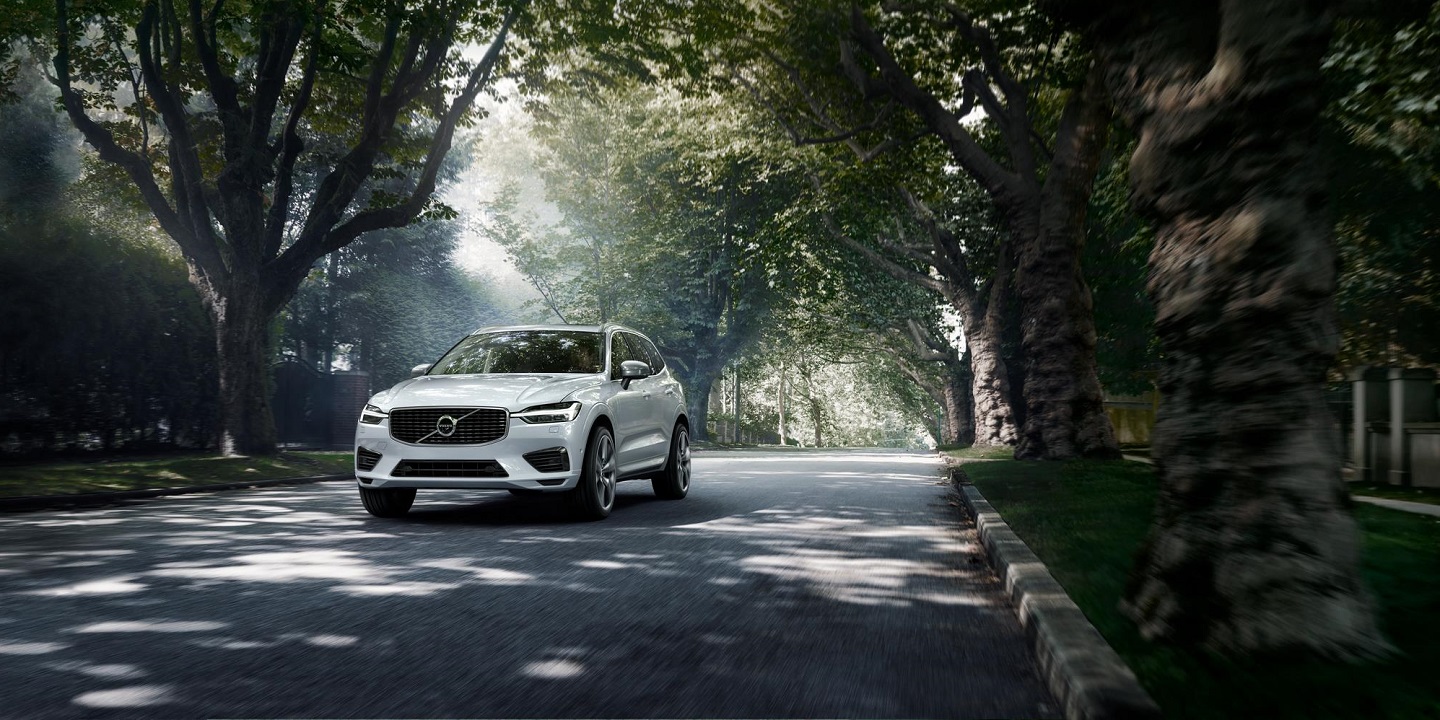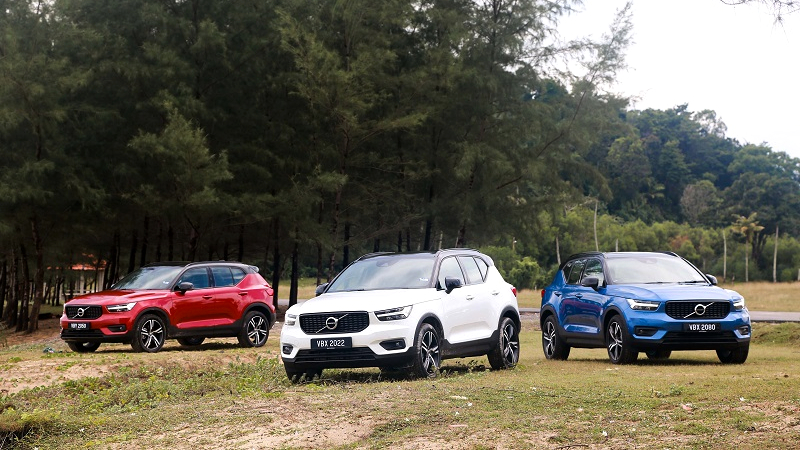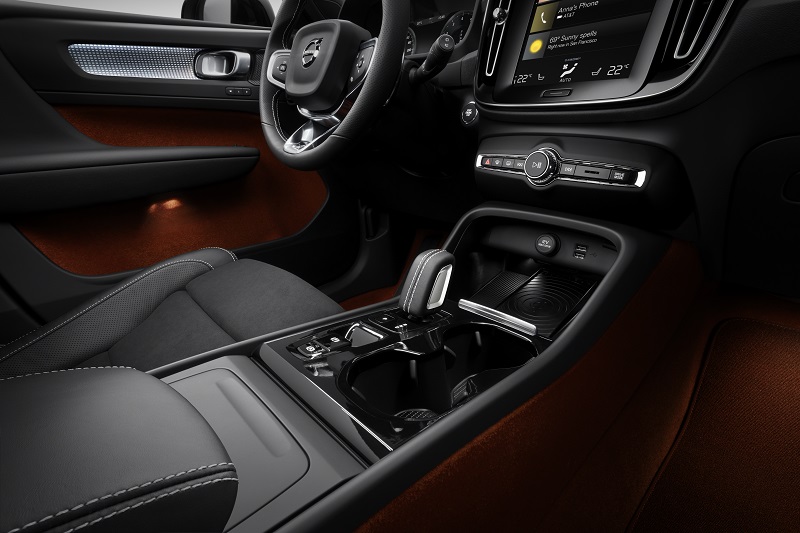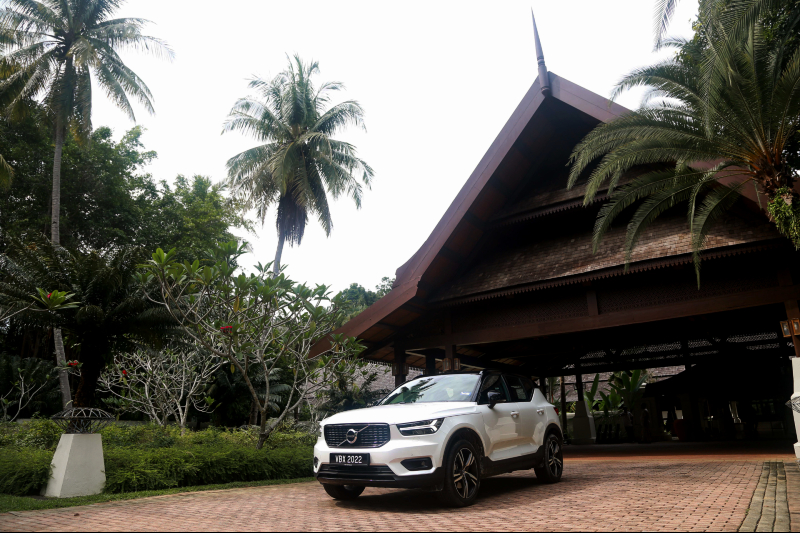
High ground clearance gives the XC40 a powerful stance and excellent visibility (Photo: Volvo)
If driving a new car is like being on a first date, then my rendezvous with the Volvo XC40 would be that rare treat where, upon first sight, you breathe a sigh of relief. Indeed, with its handsome looks and myriad features, getting to know the sleek sport utility vehicle (SUV) proved a pleasure and it kept me on my toes with some surprises.
At our initial meeting, the reputation of the XC40 had already preceded it. With the popularity of SUVs showing no signs of abating, there has been an onslaught of new cars in the more versatile compact crossover category. The now China-owned Swedish carmaker has joined the fray, with the newest release marking an important first. Having chosen to position the SUV in the narrower luxury subcompact vehicle pool, it invested heavily in crafting a vehicle that speaks to the tech-savvy urban — and decidedly younger — customer.

Judging from global demand for its vehicles, accolades received — including multiple Car of the Year Awards in 2018 — and public surveys done, the Swedes have got the millennial generation (and even their parents) “swiping right” on its products.
My first impression of the SUV? It exudes confident charm. Parked in a row at our starting point, the well-defined XC40s — at 4.42m long, 1.86m wide and 1.65m tall — automatically drew a second glance. Refreshing in its youthful expression, there is nevertheless an underlying clean-cut elegance that lends a soft touch to its muscular lines and prevents it from being overly angular. A touch of understatement that reflects a Scandinavian sensibility.
Malaysia gets the T5 R-Design all-wheel drive spec, which has a sleeker and more dynamic exterior styling such as the distinctive black-gloss on the lower grille, bumpers, roof rails, door mirrors, side skirting and rear skid plates for contrast. Also featured is the Volvo trademark “Thor’s hammer” horizontal T-shaped LED headlights, said to be inspired by Marten Eskil Winge’s classical painting depicting a mythical thunder god, Thor’s Fight with the Giants. It is interesting to note that Volvo’s production facility in Sweden is in Torslanda, which means “Thor’s landing”.

Where the exterior offers visual stimulation, the interior is the heart of the design and is where its ingenuity and creative intellect truly shine. Kept deliberately simple with an all-black look, the space belies the state-of-the-art tech innovations and good old research into the needs of the modern driver, which means you can find a sleek vertical portrait touch screen as well as a hidden key fob holder in the cup holder to prevent rattling of the key while you are on the road.
An example of the thought that went into the design of the vehicle — which was spearheaded by a female designer — is the middle console that perfectly fits a box of tissues. In front of it, a detachable rubbish bin is another first. The Harman Kardon speakers have been moved to the dashboard to make room for door bins. The idea is that where most cars still design a pocket for road maps, Volvo has made it such that a 15in laptop and a water bottle can be easily stored in the driver’s door.
Everything was created with decluttering and maximising the interior space in mind: from a dedicated compartment for your phone with wireless charging and a metal hook on the lid of the glove box to hang your takeaway or folded umbrella (though they cannot weigh more than 2kg) to a card slot near the steering wheel to store your Touch ‘n Go card or parking ticket and a drawer under the driver’s seat to keep a small-sized handbag or purse. In the 460-litre boot, an additional underfloor storage at a lift of the foldable cover is particularly suited for neatly tucking away the pairs of shoes we all tend to chuck into the trunk. And if you can’t open the boot with your hands, just shake your foot at a sensor near the exhaust pipe.

One of the bigger surprises is the backseat, which has a rather comfortable slant and is roomier than expected. Finding out these clever little details was part of the fun, as was getting acquainted with the technological aspects.
Those familiar with Volvo will be well-versed with their IntelliSafe system such as adaptive cruise control, pilot assist, semi-autonomous drive, lane keeping aid, driver alert control, road edge detection, alert with auto brake and on-coming lane mitigation.
The rather comprehensive list is one of the key reasons the car sits in the higher-end category with the likes of the BMW X1, Mercedes-Benz GLA, Range Rover Evoque, Audi Q3 and Jaguar E-Pace, though many of the features come in optional packages.
Much like an eager overachiever, there can be such a thing as too much intelligence, especially when the driving-assistance features are set up to make their presence strongly felt, admittedly more so with Malaysian drivers and their bad habits. Overriding them can also be a challenge, as I found out while trying to turn off the jerky engine start/stop function and preventive auto-braking (there is lots of braking on our tailgater-thronged roads). Most of these settings are controlled via the 9in Sensus Connect touchscreen — iPad-like and uniquely rendered in portrait mode to provide ideal map reading — whose system, while within comfortable reach of the driver, can still be tedious and difficult to navigate while driving, thanks to its many layers of menu and functions.

There is also the voice-command assistance option, which functions like a mobile assistant and can be intuitively “trained” to better adapt to its owner. But a review of it only extended to adjustment of air-conditioning temperatures, so there is not much more we can say about it.
When reviewing SUVs, serious motorheads are often less-than-enthusiastic about their driving performance. This is understandably so, as these vehicles are not made for thrilling drives per se. That said, the XC40 is competent enough on the road and proves able to stir at least some excitement. Powered by a 2.0-litre turbocharged four-cylinder engine with 252 hp and 350 Nm of torque from 1,800 to 4,800 rpm, the vehicle’s eight-speed automatic transmission is capable of going from 0 to 100kph in 6.4 seconds and has a top speed of 230kph.
Our experience driving the XC40 from busy Kuala Lumpur roads to the scenic East Coast highway had little cause for complaint — it was comfortable and easy to handle in traffic as well as responsive when accelerating up to speeds of 200 kph. However, it is markedly better in the sportier drive mode. With a 54-litre full tank of petrol, we drove more than 370km to Terengganu, averaging speeds of 150 km/h — with bouts of full-throttle acceleration, followed by Eco mode fuel savings as we neared the destination — and we had a bar left when we rolled into Tanjong Jara Resort. Not the most fuel-efficient vehicle we have driven, but considering the driving pattern, it is decent enough.

As with familiarity, one inevitably starts to notice the little things, and the XC40 does have a few niggling details. For one, when the accelerator is pushed hard, there is a noticeable buzz in the engine. The seating height is also taller than run-of-the-mill SUVs, providing a stronger sense of being in a more dynamic car compared with a sedan. However, it is a matter of personal preference.
A sporty hard chassis also means that motion is felt more keenly, but this only becomes evident when the car is at higher speeds. Cruising on Malaysia’s uneven roads is about as bumpy as in any other SUV. True to its safety-first nature, the car shows some reluctance on hard corners, though it is probably more about preemptive warning than lack of ability.
Is there enough in the XC40 to make this a long-term relationship, or at least a second date? It is an all-rounder, yes, except for the price tag of RM255,160 nett (pre-road tax and insurance). But good partners do not come along all that often, so if you are happy to pay for high-tech touches and an ultra-safe European car created for the urban dweller, then it is a perfect match.
This article first appeared on Jan 28, 2019 in The Edge Malaysia.


